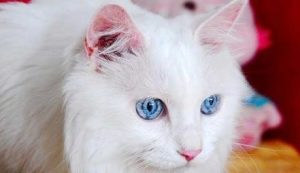Cats can indeed suffer from depression. Changes in environment, strained relationships with owners, or the introduction of new pets can all lead to feline depression. Common signs include decreased appetite, reluctance to move, and increased irritability. Depression in cats can also lead to other health issues, so it’s important to seek veterinary care if you notice these symptoms.
In China, around 200,000 people die by suicide due to depression each year, yet only 2% of depression patients receive systematic treatment. Among them, about 71% attempt to hide their condition, often appearing cheerful in public while masking their inner despair.
Just like humans, cats can also experience depression due to stress. Research by veterinarians Marta Amat, Tomas Camps, and Xavier Manteca from the Autonomous University of Barcelona has identified various factors that can cause stress and anxiety in cats, revealing their vulnerability.
Causes of Anxiety in Cats
-
Environmental changes, such as new family members or moving house.
-
Disruptions to daily routines, like altered feeding times or locations.
-
Restricted movement from being confined to a cage.
-
Poor relationship with the owner, such as owner being too harsh.
-
Introduction of new cats, which can make existing cats feel their territory is threatened.
Behavioral Changes Due to Anxiety
-
Decreased appetite.
-
Lethargy and reluctance to move. 3.Reduced interaction with other cats and humans.
-
Urinating around the house.
-
Increased aggression and irritability.
-
Compulsive behaviors like excessive grooming.
Physical Effects of Anxiety on Cats When cats are anxious or depressed, their immune system weakens, making them prone to various illnesses.
-
Upper respiratory infections, with symptoms like sneezing and nasal discharge.
-
Spontaneous bladder inflammation.
-
Skin conditions.
-
Gastrointestinal issues, such as loss of appetite, vomiting, and diarrhea.
Solutions for Anxiety in Cats
-
If a new family member is causing anxiety, isolate the cat initially. Allow gradual familiarity before introducing them properly.
-
Enhance the cat’s living environment with items like cat trees.
-
Medications like pheromone sprays or diffusers can help, but always use them under veterinary guidance.

